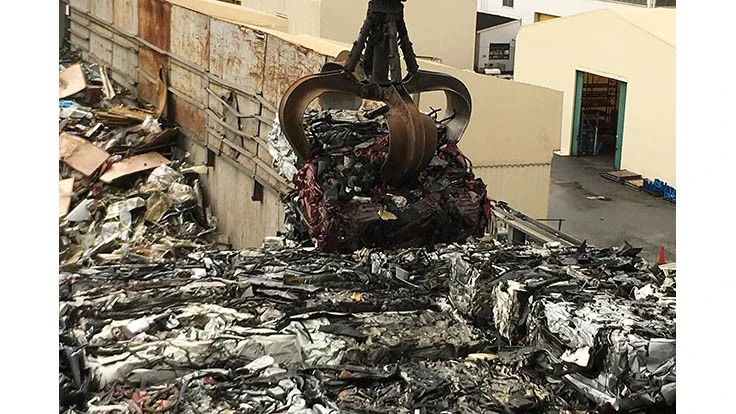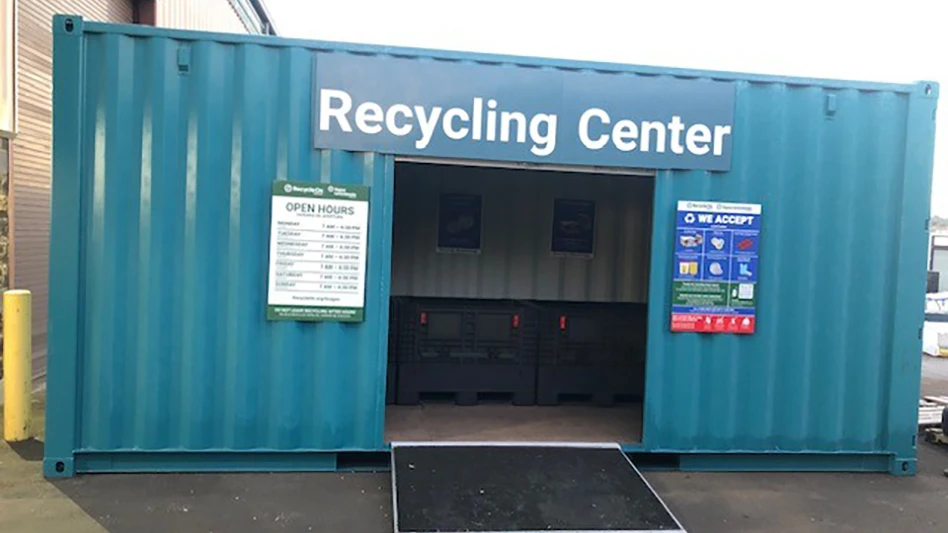
Two different methods to process end-of-life vehicles in Japan were on display in early July thanks to tours offered as part of the 2019 E-Mobility & Circular Economy (EMCE 2019) conference. The event, organized by Switzerland-based ICM AG, was held in Tokyo July 1-3.
A pair of plant tours on Monday, July 1, started at the East Japan Recycling of Resources Co. Ltd. auto dismantling facility in Chiba Prefecture, east of Tokyo. At the plant, several dozen workers dismantle end-of-life autos, vans and light trucks, with a mission to drain and collect fluids; identify re-sellable components; harvest aluminum and copper scrap; and end up with the steel frame and sheet steel that can be compressed into ferrous bales for the nearby Nippon Steel mill.
The East Japan Recycling plant is more labor intensive than competing shredding techniques, but nearly $1 million has been invested in the facility by three corporations—two of them Nippon Steel subsidiaries.
Although East Japan Recycling is co-funded by Nippon Steel and its ferrous auto bundles are designed to be used at the nearby Nippon Steel Kimitsu Works basic oxygen furnace, the company says it sells those bales at market rates.
The 260,000-square foot disassembly plant handles from 700 to 1,000 vehicles per month, including some off-road heavy equipment. East Japan Recycling earns revenue from harvested components that can be sold both in Japan and overseas, from an estimated 400 tons per month of copper wire that it harvests, and from the ferrous bales sold to Nippon Steel.
In another part of Chiba prefecture, Phoenix Metal Corp. operates a 3,500 horsepower Metso shredder to process ELVs in a more automated fashion. The company’s two pre-shredders and its 80-inch Metso mill process about 500 tons per day of ferrous and nonferrous scrap.
Phoenix Metal Corp. also operates some downstream magnetic and sorting equipment to improve the yield and quality of its nonferrous shredded grades.
The company also runs a large dismantling center—not for ELVs, but rather for refrigerators, washing machines, air conditioners and other large appliances. The disassembly activity includes not only harvesting metals, but also collecting fluids, identifying re-sellable motors and the shredding of some plastic parts.
Neither company sees many hybrid or electric vehicles, a circumstance explained at an EMCE 2019 session by Professor Arata Abe of Japan’s Yamaguchi University. According to research by Abe, as many as 75 to 90 percent of hybrid ELVs in Japan are exported whole each year.
Government and trade association data shows that more than 100,000 such ELVs are exported some years. The leading destinations are Mongolia, Sri Lanka and Russia, although Abe said Sri Lanka’s government put restrictions in place in 2018.
EMCE 2019, which featured plant tours, workshops, conference sessions and an exhibit hall, was July 1-3 at the Westin Tokyo.
Latest from Recycling Today
- US Steel to restart Illinois blast furnace
- AISI, Aluminum Association cite USMCA triangular trading concerns
- Nucor names new president
- DOE rare earths funding is open to recyclers
- Design for Recycling Resolution introduced
- PetStar PET recycling plant expands
- Iron Bull addresses scrap handling needs with custom hoppers
- REgroup, CP Group to build advanced MRF in Nova Scotia





